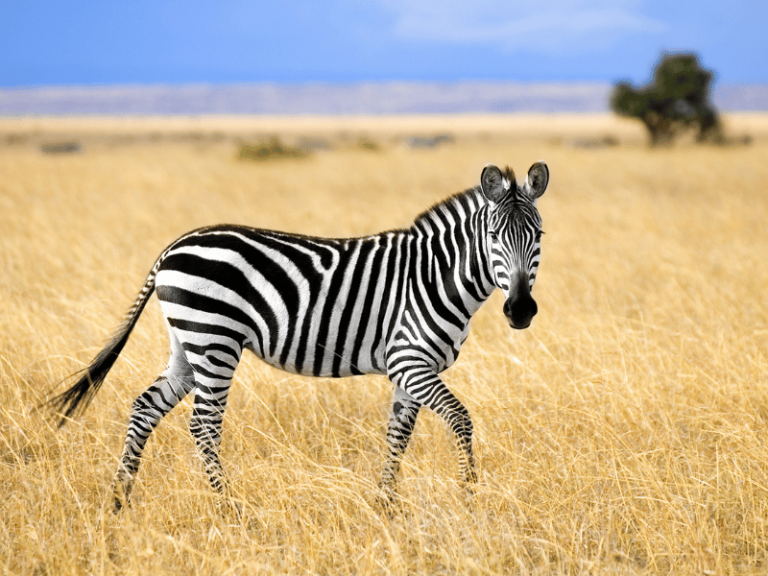The zebra, shaped like a donkey, is a mammal native to Africa, living in mountainous grasslands and sparse woodland areas. Its body is adorned with smooth black and white stripes, resembling a pattern meticulously drawn by hand. Under the sunlight, it appears exceptionally beautiful, hence earning the name “zebra.”
Zebras feed on grass and tender leaves and branches, preferring to live in herds led by a dominant leader for activities and foraging. They are adept runners with well-developed senses of hearing, vision, and smell. Upon detecting suspicious situations, zebras take turns acting as sentinels, immediately sounding alarms and fleeing in a frenzy. They have poor defensive and combat abilities, often falling prey to ambushes and pursuits by predators such as lions. However, they sometimes gather in tight formations and engage in fights with their formidable hind hooves.
The width and narrowness of the stripes on a zebra’s body vary with the species. The formation of these stripes may be related to internal skeletal structures, with vertical stripes resembling vertebrae and lateral stripes resembling ribs. These beautiful stripes serve as identifiers among conspecifics, attract mates for mating purposes, and importantly, provide protective camouflage adapted to their environment. In sunlight or moonlight, due to differences in light absorption and reflection by the two colors, the stripes disrupt and scatter the contours of their bodies. When viewed from a distance, it becomes challenging to distinguish zebras from their surroundings; even at close range, unless they move, their location is difficult to discern. This reduces the chances of exposure to predators. This adaptation is a result of long-term natural selection: zebras with less conspicuous stripes gradually get eaten by predators, while those with prominent stripes are preserved and passed down from generation to generation, evolving into the strikingly beautiful zebras seen today. This serves as another excellent example in nature of organisms adapting to their living conditions.

